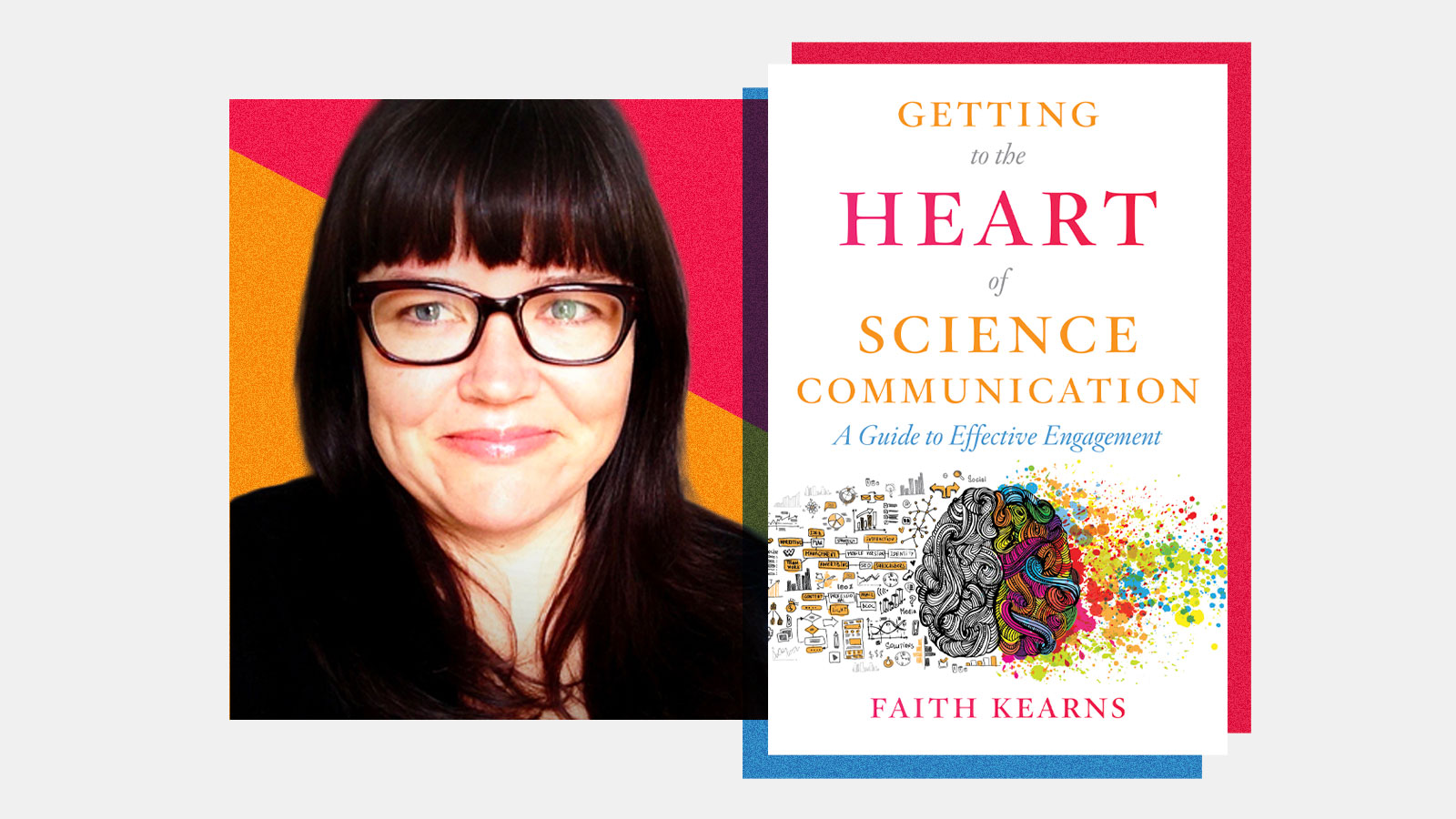Faith Kearns thought she knew how to talk about science. In 2008, she was working in a fire center at the University of California, Berkeley, not long after getting her doctorate there. Kearns had already worked in communications for years. Then she spoke at a community fire safety demonstration in Northern California. She and her colleagues followed all the conventional advice about what to say, but something felt off.
After the presentation, a man came up to Kearns, emotional. Listening to them present steps of what he should have done to protect his home from fire had been traumatizing. Just a few months before, wildfires had burned through this small community in Mendocino County. For her audience, the memory was still fresh, the wounds raw.
“I knew those fires that happened, but I didn’t put together that we were going to be talking to people who were directly affected by that fire, and that talking about things they should do raised a lot of guilt, a lot of shame, a lot of trauma,” Kearns said in an interview with Grist. Her rigorous academic training had not prepared her for this — and maybe it had made things worse. “That really forced me into a reckoning about what science communication is,” she said. “And I’m still reckoning with it.”
Kearns’ new book, Getting to the Heart of Science Communication: A Guide to Effective Engagement, out this month, argues that there’s no one “right” approach to talking about the climate crisis and other contentious scientific issues. She collects anecdotes and advice from science communicators who are wrestling with all of the feelings and opinions that climate change, genetically modified foods, and vaccines tend to stir up.
She tells stories of an environmental journalist fielding desperate calls from New Jersey residents during Hurricane Sandy; a professor trying to help college students who felt helpless learning about climate change; and a scientist breaking the news to homeowners in Charleston, South Carolina, that their properties will soon be underwater. (Sometimes, climate scientists are like doctors delivering bad news to patients.)
The book holds lessons for anyone who wants to take on the challenge of talking about loaded scientific topics, and it addresses misconceptions and oversimplifications about the best way to do it.
MYTH: It’s all about crafting the right message.
No matter how pretty your slideshow is or how carefully you’ve curated your talking points, it will probably fall flat with people who have lived through a disaster. Good communication is two-sided, Kearns writes, requiring empathy and listening.
“It’s really absurd to think that you would have a class on ‘public listening,’ right?” Kearns joked. “Whereas like ‘public speaking’ is this ubiquitous thing. At some point, I start to wonder: Who’s doing all the listening to all this public speaking?”
MYTH: If people just know the facts, they’ll change how they act. Right?
For a long time, scientists have relied on a “deficit” model of communication. The idea is that if people are given enough facts and data about, say, climate change, then they’d accept the science— in a logical, rational way — and decide to take action. This idea isn’t necessarily wrong, but it ignores the messiness of the world and the role that emotions play in guiding decisions. “We’ve just sort of neglected many other pieces of communicating that don’t have to do with providing information,” Kearns said.
MYTH: Scientists can be and should be totally objective.
It’s time to change the assumption that scientists ought to be cool, calm, collected intellectuals who stoop down to talk to journalists every once in a while, Kearns argues. After all, scientists are part of the public, too, and with wildfires and hurricanes growing in intensity, they’re often living through the very effects they’re studying. She says true objectivity is impossible.
“Indeed, what the debate over science advocacy has regularly glossed over is that there are at least as many ethical concerns with standing on the sidelines as there are with engaging,” she writes.
MYTH: People just need to “listen to the science.”
“The landscape of climate communication has been dominated by a particular type of argumentation: ‘You’re with us or you’re against us,’” Kearns said. So it follows that the underlying reasons people dismiss climate science have more to do with political identity than logic. You can see this same story play out vividly with COVID-19.
Kearns says that the label of “climate denier” has been applied too broadly, making matters worse. “We end up in these very contentious spaces, where the ability to have complex conversations is just really, really lost.”
MYTH: Climate communicators need to learn how to elicit the “right” emotions.
A long-standing debate on Twitter — and in academic research — centers on one question. What’s the better way to get people to care about climate change: Scare them into action or give them hope so they don’t become hopeless? The whole idea of trying to use emotions as levers to get people to care “feels very false,” Kearns said. “What I’m talking about is just dealing with very strong emotions that actually already exist on all of these topics.”
Though it might not sound like the most interesting topic, people have strong opinions about water, just waiting to bubble up. “I can show up on a Saturday morning at a community center, and there will be 40 people there who are really interested in talking about water in California, and they have very, very strong feelings about it.”
MYTH: Good conversations steer away from conflict.
“Actually, the absence of conflict, to me, tends to mean that people aren’t invested in a topic,” Kearns said. She’s conflict-averse herself, so she understands wanting to avoid a shouting match. But she says that conflict needs to be more accepted, or “normalized,” because it can be a start to an effective conversation. The more people become used to having disagreements without getting overheated, the easier they are to navigate.
“There’s a lot of richness within conflict, and maybe getting more comfortable with operating in a conflict space might actually help us to figure out better how to proceed.”
*Correction: An earlier version of this article misstated the year Kearns was in graduate school.




